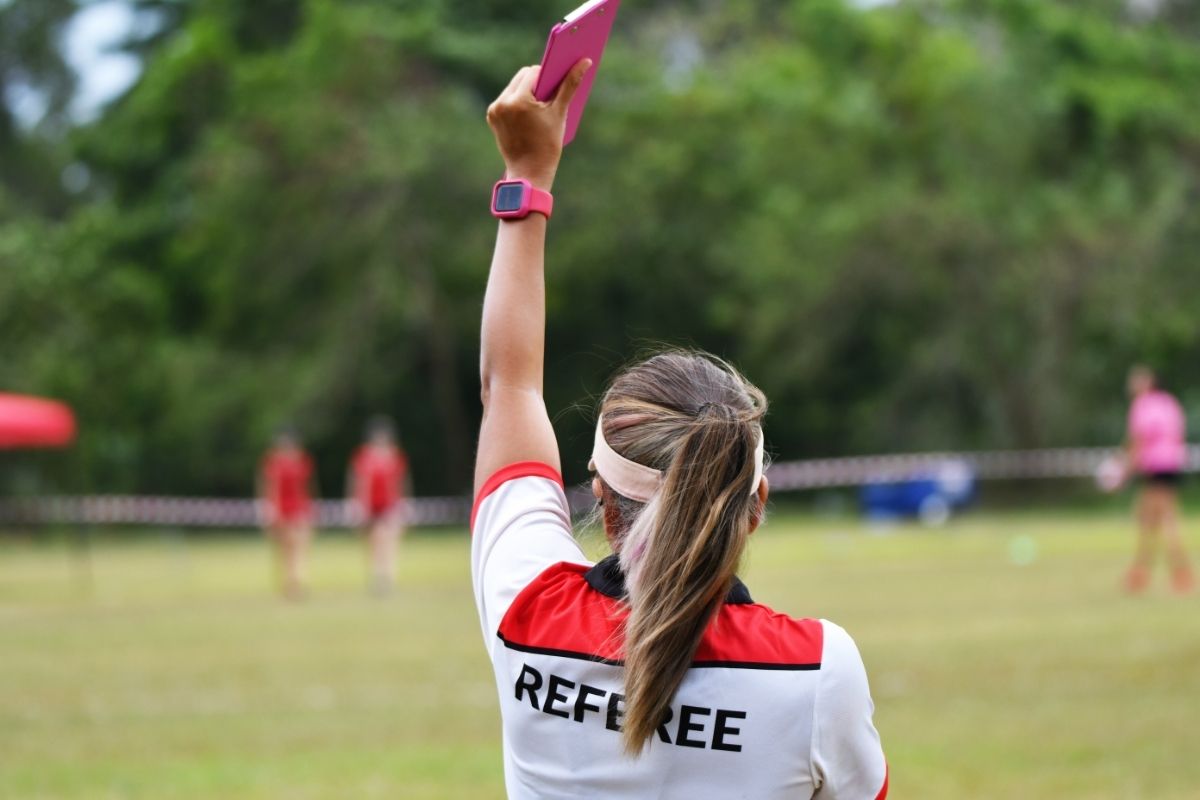If you are new to softball, then you may have heard of a rule known as the ‘mercy’ rule. The name itself can sound pretty scary but what is the mercy rule really and how does it work?
Here we are going to be looking at the mercy rule, what it is and how it works within the sport of softball.


This way, you can understand more about the rules of softball and why sometimes, a softball game may end a lot earlier than when the clock runs out.
What Is The Mercy Rule?
The mercy rule is a common rule used in lots of different sports, including softball. It is known by a range of different names including the slaughter rule, the skunk rule, or the knockout rule.
However, despite the different names this rule goes by, they all work in the same way.
The mercy rule is a rule used to end a game earlier than it usually would because one team is so far ahead that it is impossible for the other team to catch up and win.
To save the losing team further humiliation of potentially losing even more points and thus increasing the opposing teams’ already obvious win, they use the ‘mercy’ rule to end the game early.
Hence why this rule is called the ‘mercy’ rule – because it gives mercy to the losing team, sparing them from further embarrassment.
Who Uses The Mercy Rule?
The mercy rule is pretty common in most sports but is rarely ever used because it’s unlikely that a team would have such a huge lead over another.
However, most youth sports and high school sports leagues and associations use the mercy rule in a range of sports including baseball, American football, soccer, and softball.
Some college sports also use the mercy rule but each sport and league and even certain states have their own rules regarding when a mercy rule can take effect.
For example, the National Collegiate Athletic Association (NCAA) for college football allows the mercy rule to take effect only when there is a mutual agreement between both coaches and the referee.
This took effect in 2016 when the Missouri Tigers were leading the Delaware State team by 58 points to 0 by halftime.
The coaches and referee agreed to use the mercy rule to cut down the times of both the third and fourth quarters to 10 minutes each, shaving off 10 minutes of the overall gameplay time.
Despite this, the Missouri Tigers still went on to add an extra three touchdowns to the score, breaking records for the most points scored in a college football game and for the greatest margin of points for victory.
So, that is how the mercy rule works in general – but what about in softball? When can a team use the mercy rule and how much time can they shorten down the time?
How The Mercy Rule Works In Softball
Softball is one of the few sports that extends the mercy rule beyond the youth leagues up to and including international competitions.
Many people initially think that the mercy rule is only included to help protect kids and young players from embarrassment and upset when they are facing a crushing defeat but in softball, the same mercy rule applies for games played by adults.


The International Softball Federation allows a mercy rule for their games, although they call it a ‘run rule’ instead.
This rule means that if a team is leading by 20 runs after just three innings, then the rule can be used to shorten the game.
It also applies for when a team is leading by 15 runs after just 4 innings and for when a team is leading by 7 runs after 5 innings.
At these points, the victor is clear and thus, the ‘run’ rule can be used to shorten the game and save the opposing team further humiliation. So, the game ends once the mercy rule is in effect.
This same criteria applies to high school and youth leagues too although some states may vary the criteria.
For example, in Alaska, the ‘run’ rule can be used if a team is leading by 15 runs after just 3 innings, or if they are leading 12 runs after 4 innings, or by 8 runs after 5 innings.
Is The Mercy Rule Popular?
The mercy rule is a bit controversial in softball.
This is because in the eyes of some coaches, their team deserves the chance of a comeback. Although they cannot win, they can at least try to shorten the gap between both scores.
So, some coaches would rather the mercy rule be waived so they can continue playing and shorten the gap between their team and the victors.
However, it is also considered unsporting for a clearly victorious team to continue to win points to run up their score as this only humiliates their opponents further.
So, if a game does continue, then the victorious team could come under fire for running up their scores when all they are doing is playing the game to the best of their ability.
It’s unfair to ask a team to play poorly so for this reason, some coaches support the mercy rule as it allows their team to play at their best without looking unsporting to others.
So, it’s clear that there are points both supporting and against the mercy rule.
On one hand it robs the losing team the chance of a comeback while on the other, it spares the victorious team from damaging their reputation by running up their scores.
Conclusion
So, the mercy rule in softball is sometimes called the ‘run rule’ but both names apply to the same rule.
This rule is that at a certain point in the game when the victor is clear, the game ends because it is impossible for the opposing team to still win.
When the mercy rule comes into effect depends on the inning and the amount of runs the victorious team has.
This rule applies to all levels of softball, including international competitions, and softball is one of the few sports that does this.
- Can You Play Pickleball on Grass? Tips and Tricks - June 12, 2023
- Do Pickleballs Wear Out? Everything You Need to Know - June 12, 2023
- Can You Play Pickleball on Concrete? A Guide to Playing on Hard Surfaces - June 12, 2023








